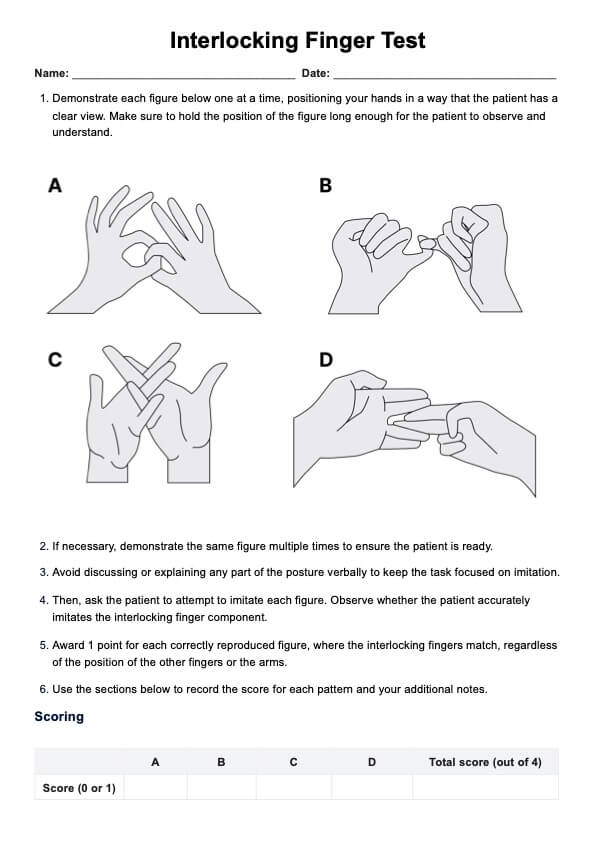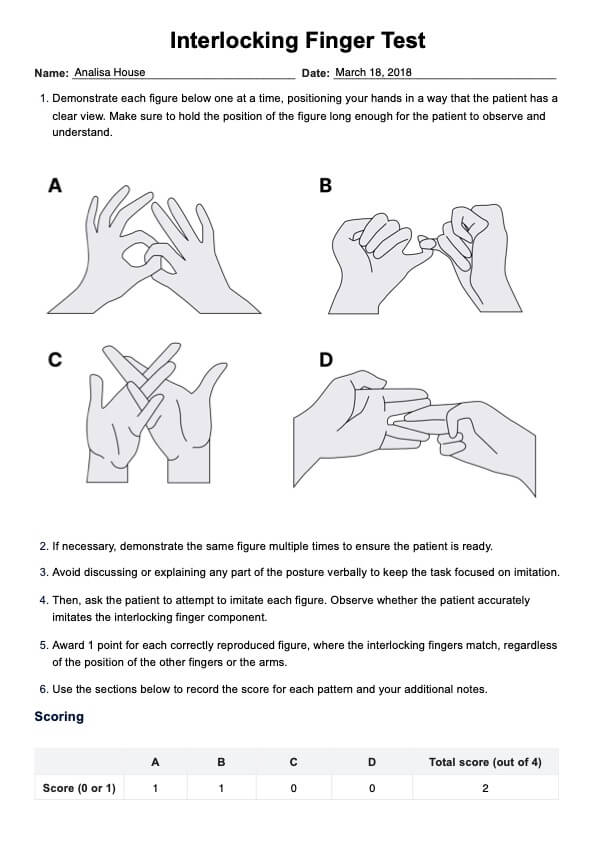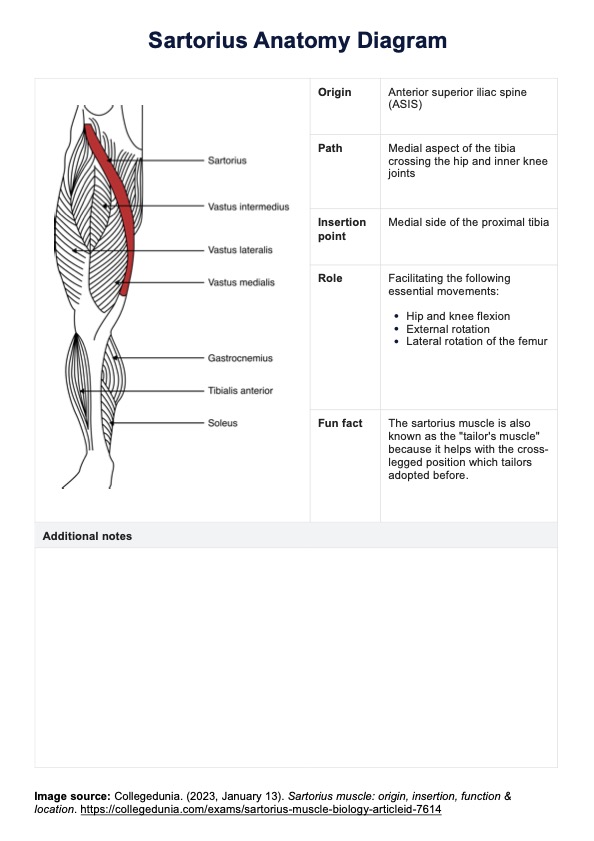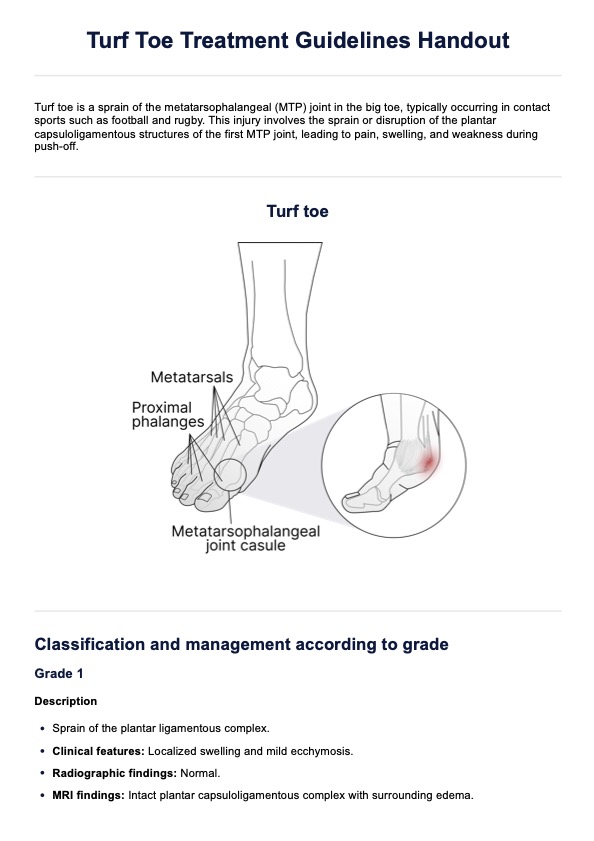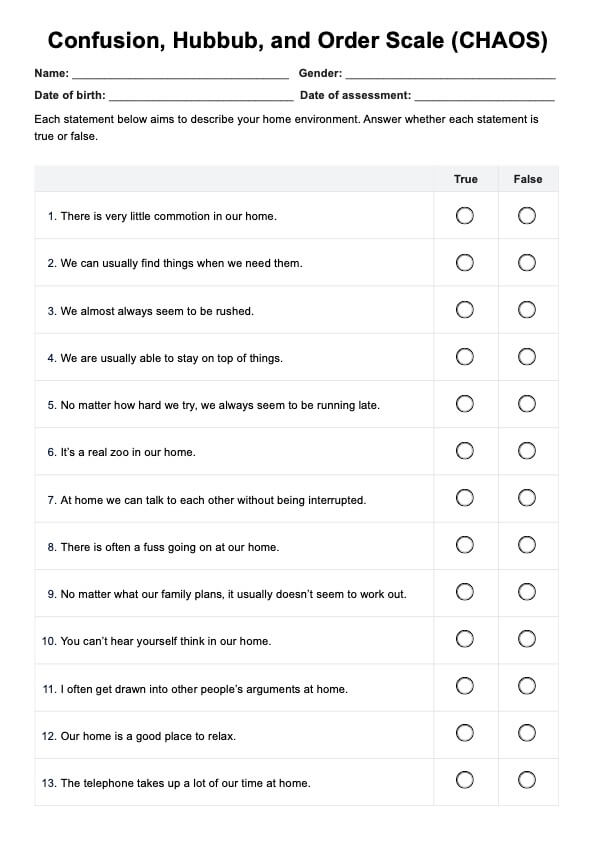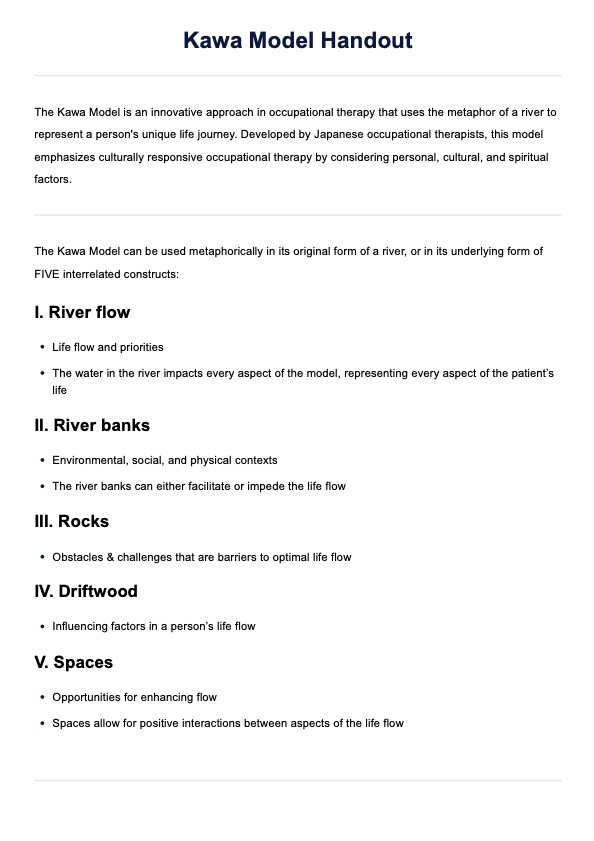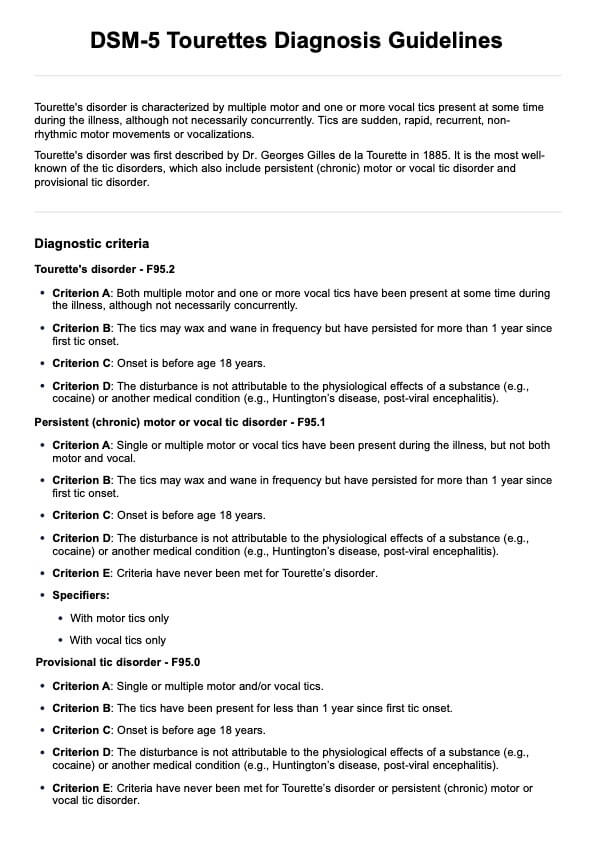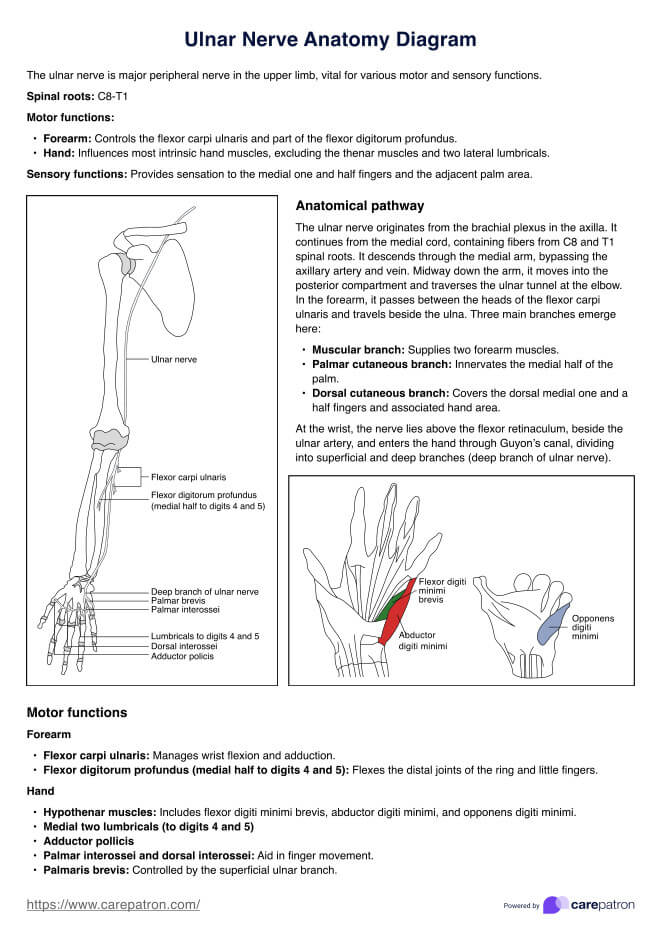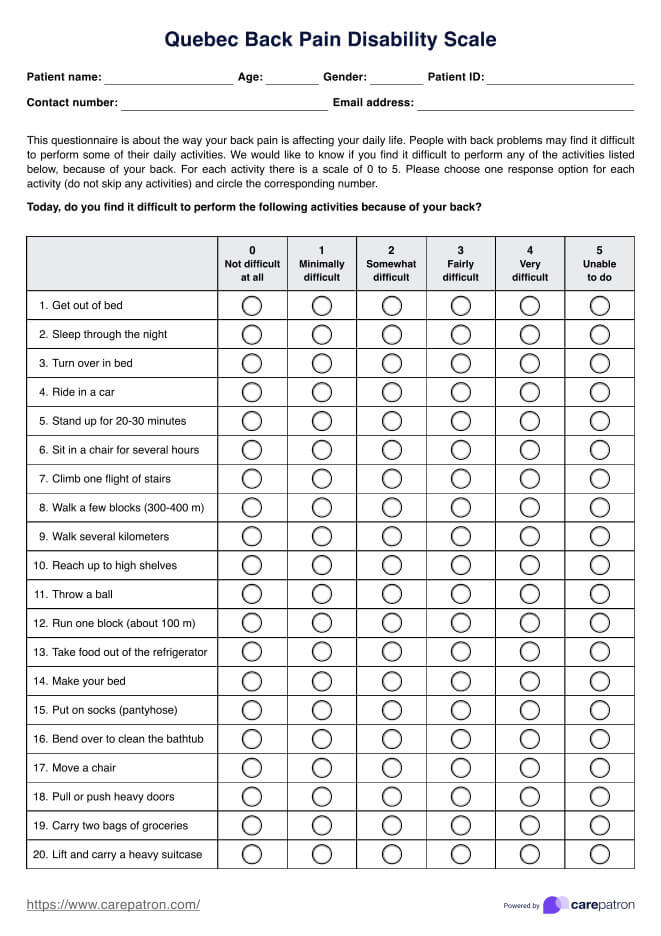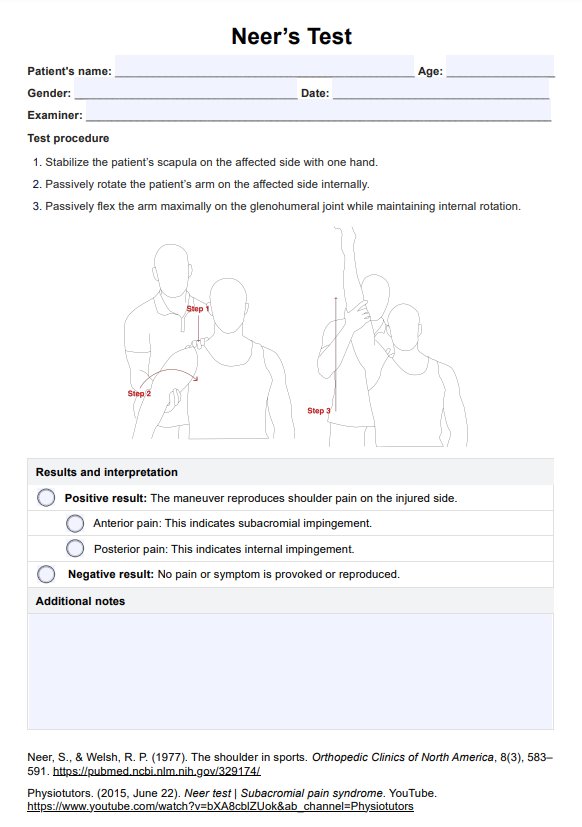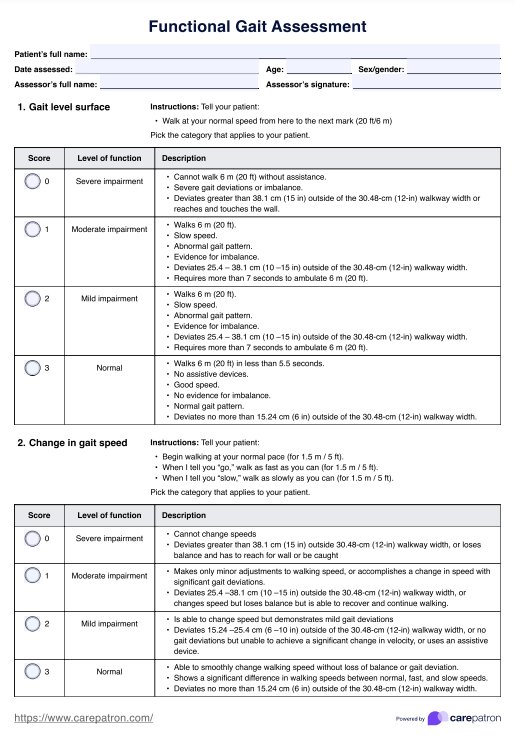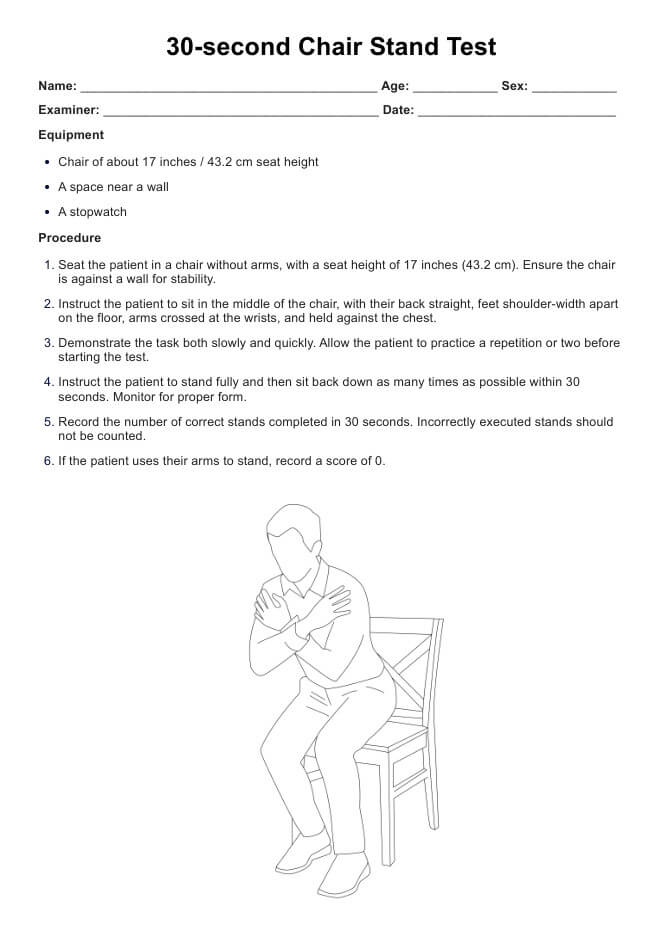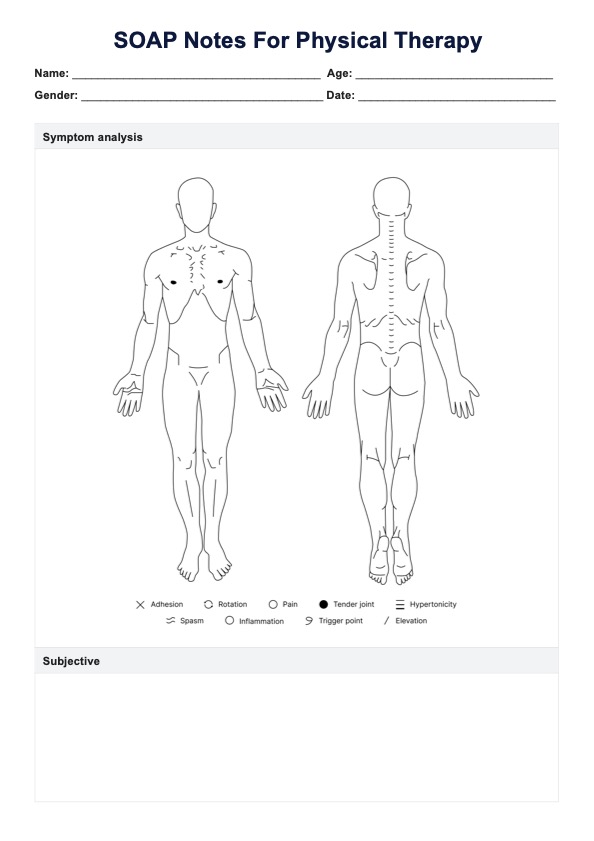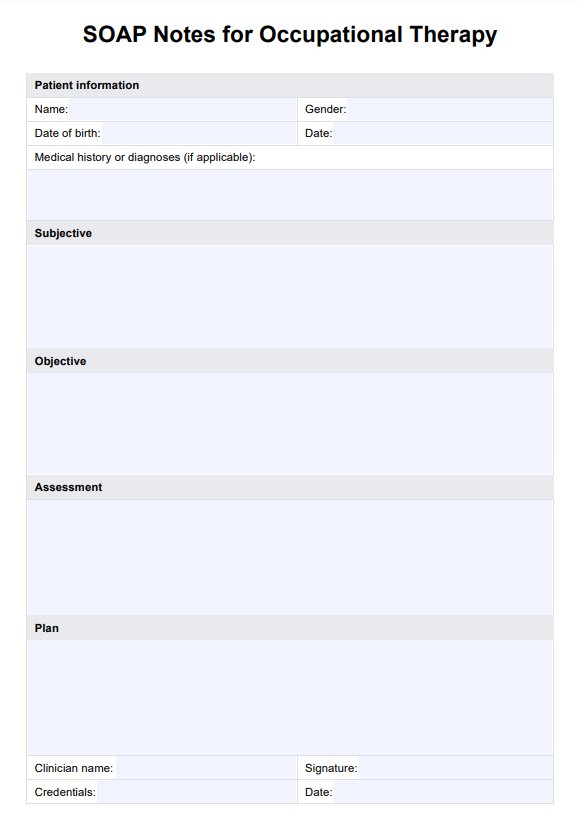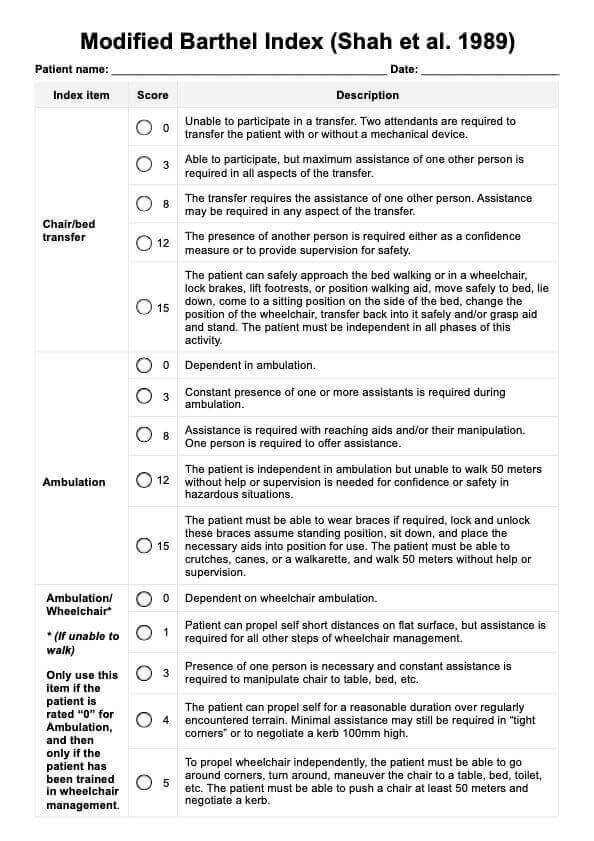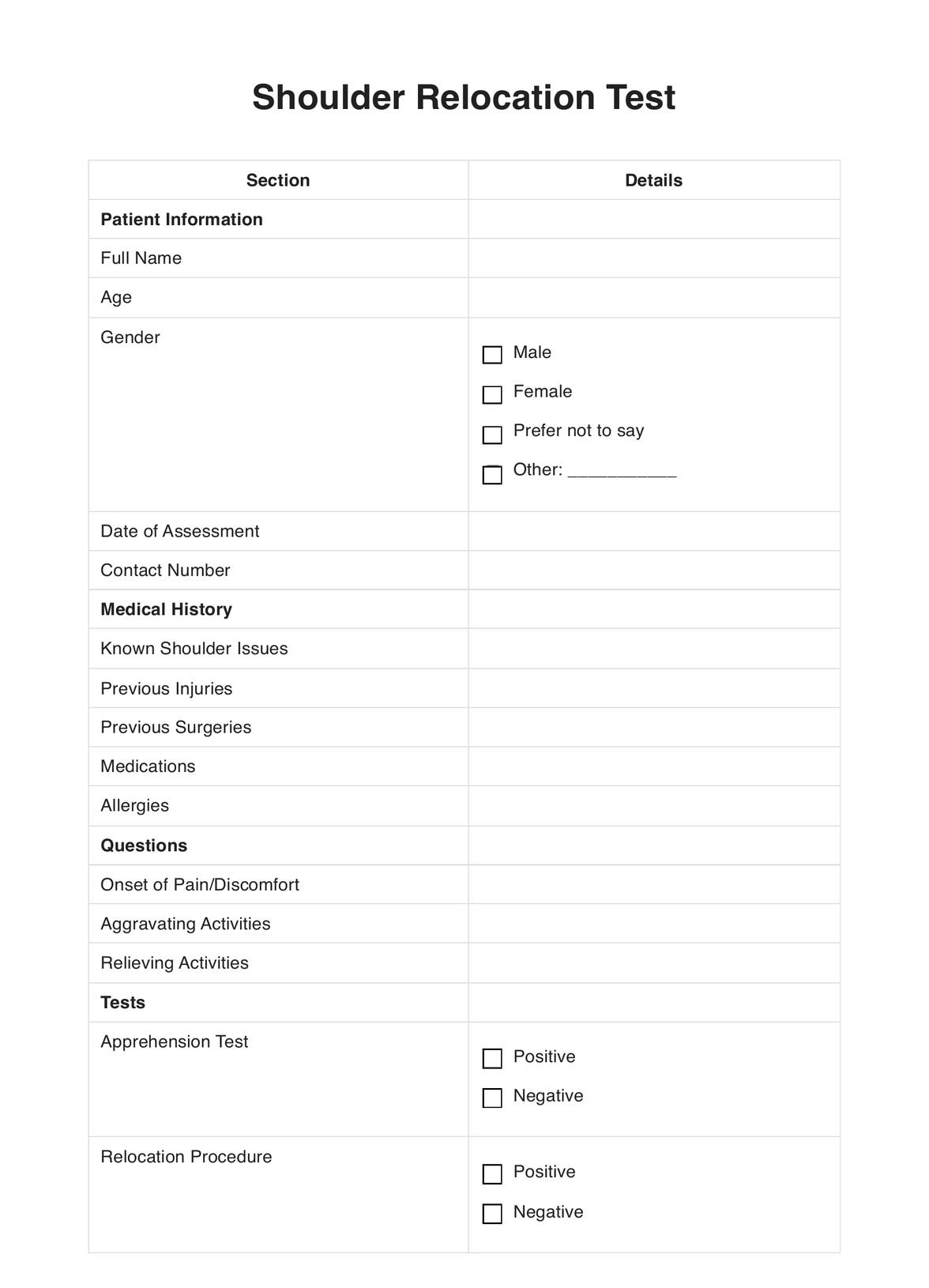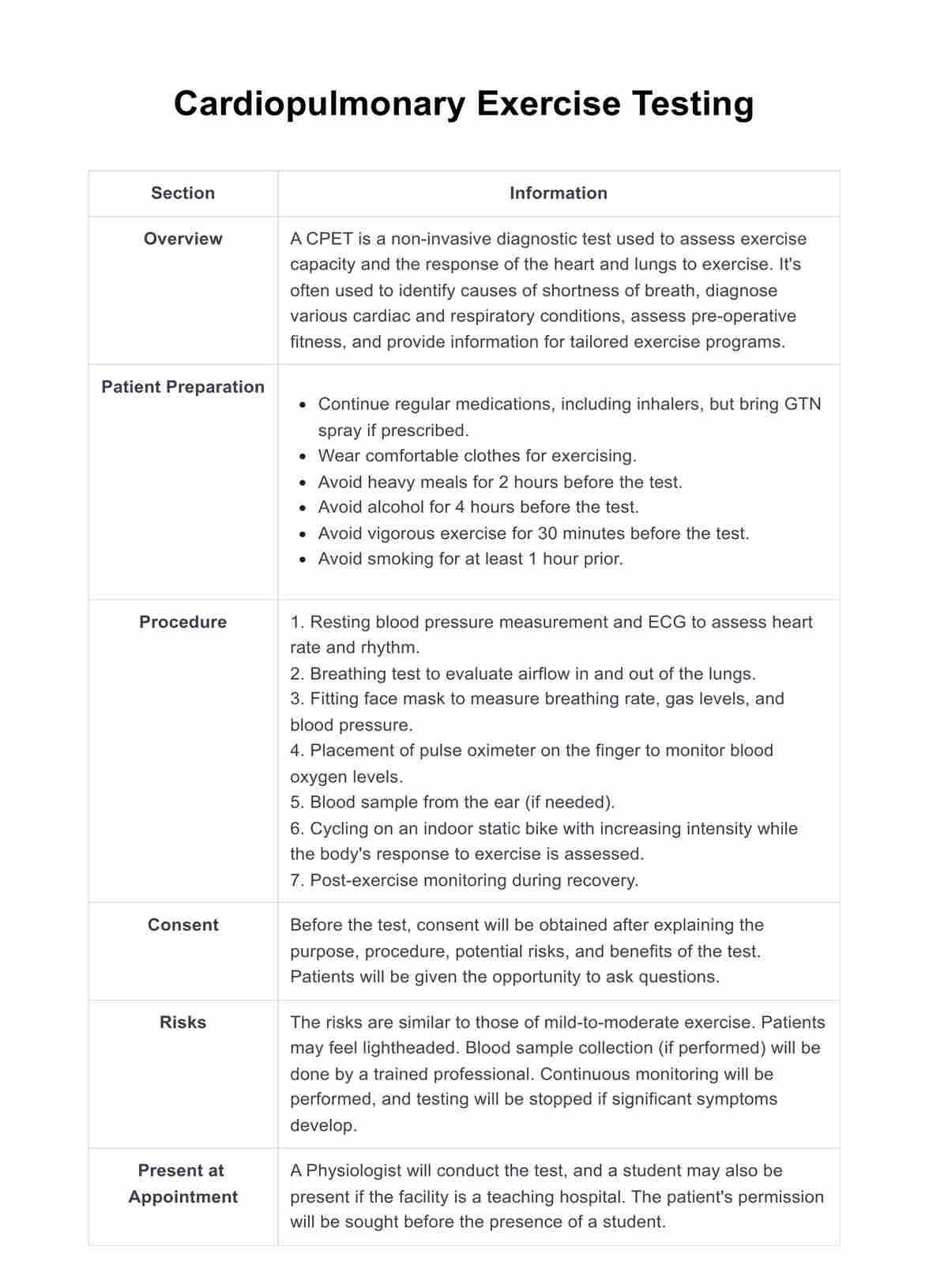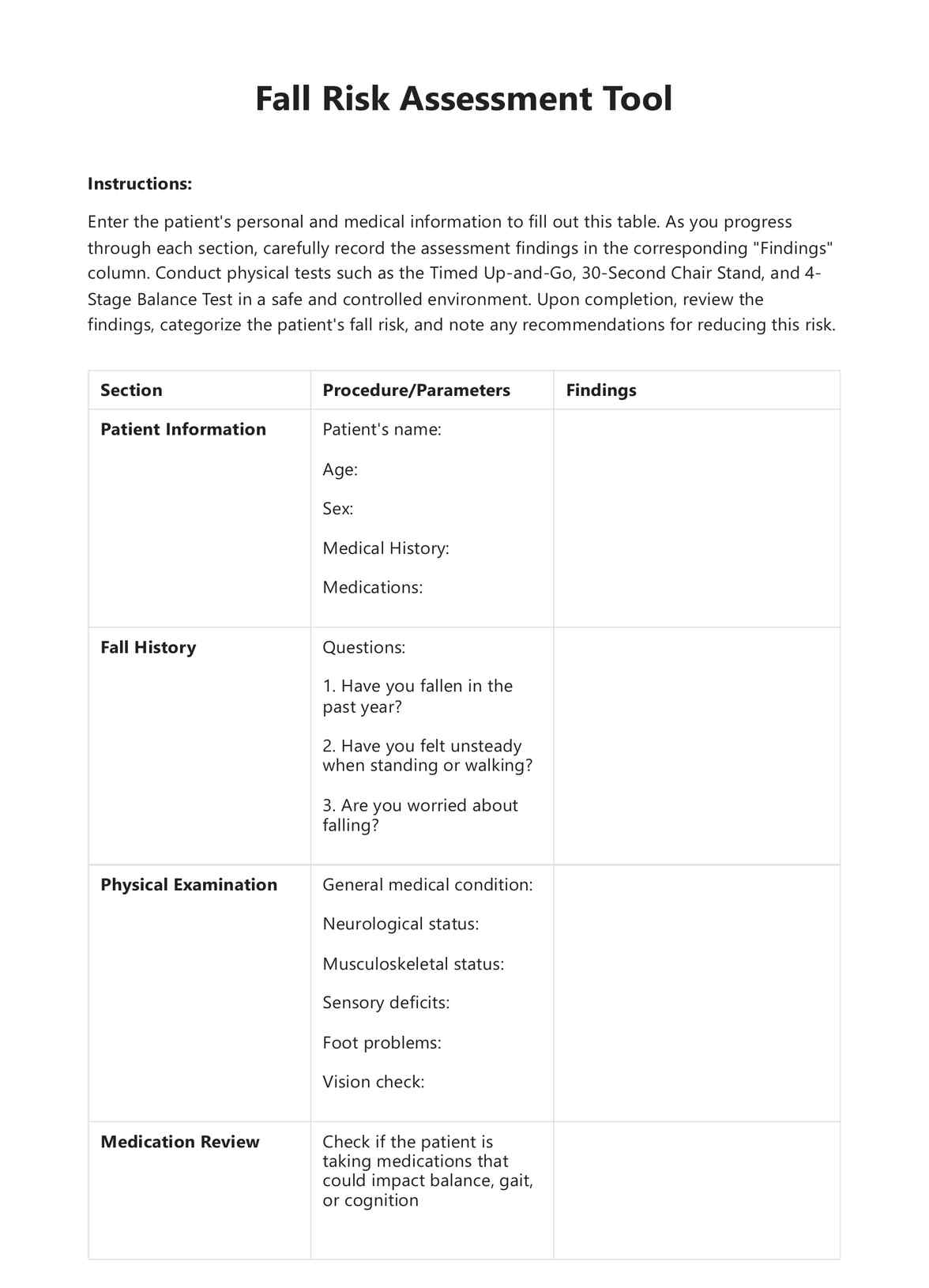Interlocking Finger Test
Get access to a free Interlocking Finger Test template. Use our valuable PDF as an initial bedside screening test for parietal lobe dysfunction.


What is an Interlocking Finger Test?
The Interlocking Finger Test is an initial bedside screening tool developed by Moor and colleagues (2003) to screen parietal lobe dysfunction. It is a simple test that can be performed in a clinical setting and does not require any specialized equipment.
To perform the test, patients are instructed to imitate each of the four interlocking finger figures presented by the examiner. The examiner will demonstrate each figure one at a time, ensuring that patients can clearly see the actions. The figures used are uncommon and devoid of any symbolic meaning to focus solely on the imitation task. The examiner will continue to show the figure until the patient feels confident that they have accurately reproduced it.
The patient's ability to imitate the figures is scored based on accuracy, with one point awarded for each correctly reproduced figure. The total score will be a whole number, ranging from 0 to 4, reflecting the number of figures successfully imitated. Figures were deemed correct when the interlocking finger component was accurately positioned, regardless of the placement of the non-interlocking fingers or the posture of the arms.
Interlocking Finger Test Template
Interlocking Finger Test Example
How to use our Interlocking Finger Test template
Carepatron's Interlocking Finger Test template makes it easier for healthcare professionals to administer the test. Follow the steps to utilize it:
Step 1: Access the template
Click "Use Template" to utilize the template via the Carepatron app, allowing you to customize it for your needs. You can also click "Download" for a PDF copy.
Step 2: Prepare the patient
Explain the procedure to the patient and ensure they are comfortable. Have them sit in a chair facing you with their hands on their laps.
Step 3: Demonstrate each figure
Demonstrate each figure one at a time, giving the patient ample time to observe and prepare to imitate. Use the instructions in the template to guide your actions.
Step 4: Score the patient's performance
Score the patient's performance based on their accuracy in imitating each figure. Use the scoring system provided in the template to determine their total score.
Step 5: Add notes
Use the "Additional notes" section of the template to record any relevant information or observations about the patient's performance.
Step 6: Save and share
Save and share the completed template with other healthcare professionals involved in the patient's care for a comprehensive overview of their performance on the InterlockingFinger Test.
Benefits of using this template
Using our Interlocking Finger Test template can streamline the testing process and provide a standardized way to document and track a patient's performance. Some potential benefits include:
- Standardization: The template provides clear instructions and a scoring system, ensuring consistency in administering and documenting the test.
- Efficiency: By using a pre-made template, healthcare professionals can save time on documentation and focus more on interacting with the patient during the test.
- Collaboration: The completed template can be easily shared with other healthcare professionals involved in the patient's care for a more comprehensive understanding of their performance on the test.
- Tracking progress: By saving completed templates, healthcare professionals can track a patient's progress over time and assess the effectiveness of any interventions or treatments.
Implications of poor performance of the Interlocking Finger Test
Poor performance on the interlocking finger figure task was most correlated with impairments on parietal lobe tests during formal neurocognitive testing done by Moor and colleagues (2003).
Although the Interlocking Finger Test surpassed conventional parietal lobe tests in many aspects, its specificity was not high, indicating it performed at least as well as conventional tests but not exceptionally better.
A less than perfect score on the-than-locking Finger Test should prompt further exploration with formal cognitive testing. It is crucial to employ multiple complementary tests together to precisely assess neuropsychological dysfunction, as with all clinical assessments. Notably, the Interlocking Finger figure test not only correlates highly with other assessments but also provides valuable insight into a patient's neuropsychological function.
Other tests for parietal lobe dysfunction
While the Interlocking Finger Test is a great initial bedside screening tool for parietal lobe dysfunction, it is not the only test available. Other tests that can be used include:
- Rey-Ossterreith complex figure test: This test assesses visual-spatial and visuoconstructive abilities by requiring the patient to copy a complex figure.
- Clock drawing Test: This simple test evaluates executive function and visual-spatial skills by having the patient draw a clock face with specific instructions.
- Benton Judgement of Line orientation: This test measures spatial perception and is especially useful in detecting right parietal lobe dysfunction.
- Ravens Progressive Matrices: This nonverbal test measures abstract reasoning and is useful in detecting left parietal lobe dysfunction.
- Hooper visual organization test: This test evaluates visual organization and perception by having patients identify common objects from fragmented images.
Healthcare professionals should always-keep in mind that no single test can provide a comprehensive evaluation of neuropsychological function. Therefore, it is crucial to use multiple tests together to accurately assess and diagnose parietal lobe dysfunction.
Reference
Moo, L. R., Slotnick, S. D., Tesoro, M. A., Zee, D. S., & Hart, J. (2003). Interlocking finger test: A bedside screen for parietal lobe dysfunction. Journal of Neurology, Neurosurgery & Psychiatry, 74(4), 530–532. https://doi.org/10.1136/jnnp.74.4.530
Commonly asked questions
To perform the test, patients are instructed to imitate the four interlocking finger figures shown by the examiner. The examiner will demonstrate each figure individually, ensuring patients can clearly see the actions. The figures are uncommon and lack symbolic meaning to focus solely on imitation. The examiner will continue to present the figure until the patient feels confident, they have accurately reproduced it.
Interlocking fingers is not a diagnostic indicator of any specific condition. However, difficulty in completing the interlocking finger test may indicate impaired visuospatial skills and coordination, which can be associated with parietal lobe dysfunction.
The finger-tapping test is a widely used quantitative assessment tool designed to evaluate motor performance in the upper extremities. This task involves a complex motion influenced by external stimuli, mood, and health status.


